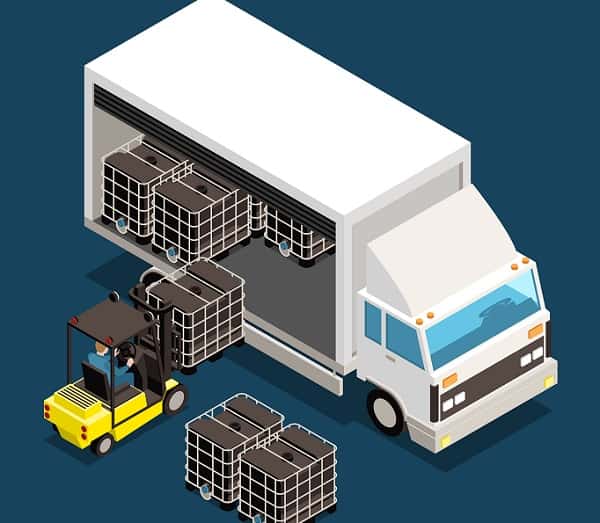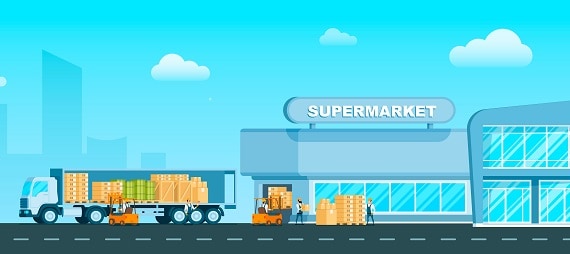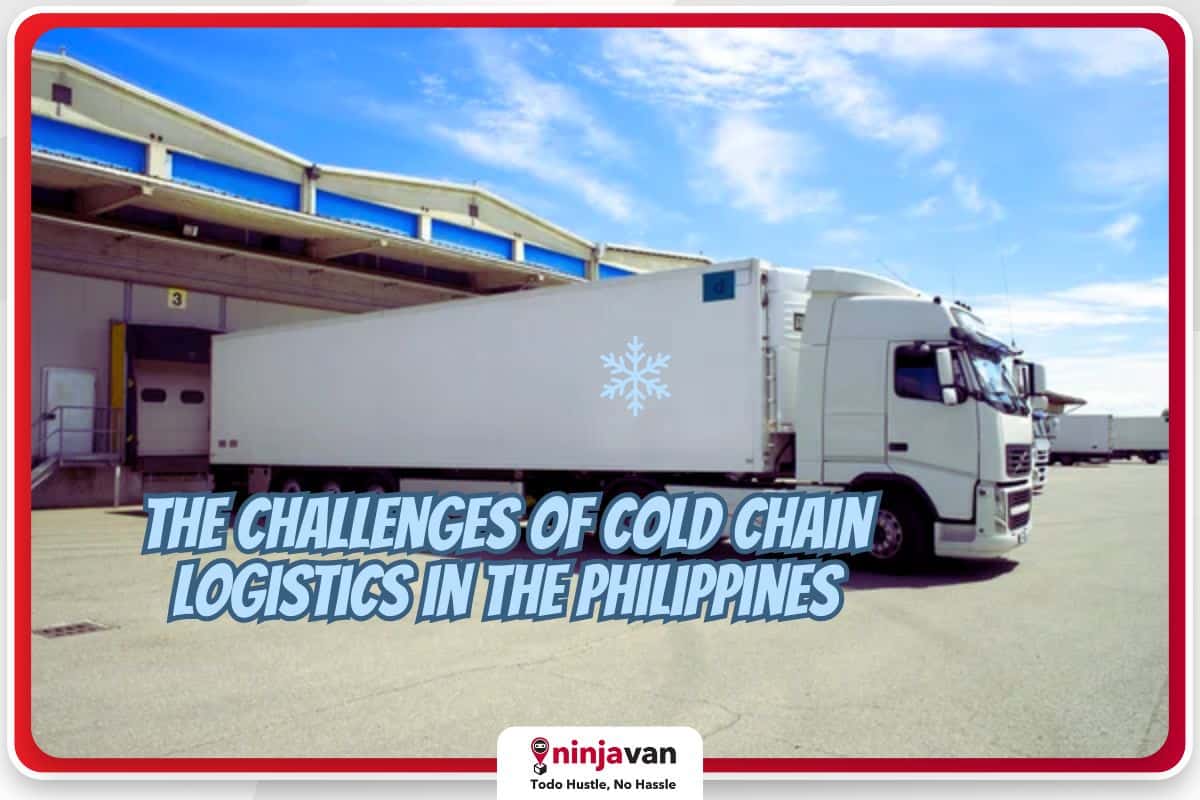Cold chain logistics is a critical element for any e-commerce business dealing with temperature-sensitive products. Whether your products are creamy chocolates, life-saving vaccines or fresh blooms, understanding the ins and outs of cold chain logistics is key to delivering your goods in top-notch condition.
This guide will simplify the complex journey of your goods from warehouse to doorstep, ensuring they remain perfectly chilled or frozen throughout. Dive in to discover how mastering cold chain logistics can elevate your business, keeping your products fresh and your customers happy.
What is cold chain logistics?
Cold chain logistics is a key part of transport management, focusing on moving perishable goods, like food, medicines and certain chemicals. The process ensures these items maintain specific temperatures from the start of their journey to the end. It involves closely watching the inventory while it’s in transit, making sure everything stays fresh, safe and effective.
Cold chain logistics management is essential for businesses that rely on keeping their sensitive products at certain temperatures. By carefully monitoring these items as they move, this specialized system ensures they reach their destination in the best possible condition.
Who needs it?
Businesses dealing with perishable goods, vaccines and temperature-sensitive pharmaceuticals heavily rely on cold chain logistics. In the Philippines, a tropical country, the demand for efficient cold chain solutions is even higher to maintain product integrity from farms to tables and factories to patients.
Importance of cold chain logistics in the Philippines
The country’s geographical setting opens it up to unique challenges in preserving product quality amid hot and humid conditions. Cold chain logistics in the Philippines plays a pivotal role in sustaining the agriculture and healthcare sectors, contributing to food security and public health.
#NinjaTip: Get shipping and logistics solutions tailored to your business needs. Ninja Van is your one-stop logistics partner to optimize your business for growth. Discover what we can do for your business.
What are the different cold chain technologies?
Maintaining consistent temperatures during transportation is critical for perishable products in e-commerce. Cold chain logistics uses various technologies to ensure these products reach their destination in optimal condition.
Here’s a breakdown of some key cold chain technologies:
1. Dry ice
Solid carbon dioxide, dry ice offers a powerful and mess-free solution for maintaining freezing temperatures (-78.5°C or -109.3°F). The temperature makes it ideal for long-distance transport of frozen foods or pharmaceuticals requiring ultra-low temperatures.
Unlike regular ice, dry ice eliminates the risk of water damage to products or packaging.
2. Gel packs
Filled with a refrigerant gel, these versatile packs provide controlled cooling for shorter trips. They absorb heat more slowly than ice, maintaining a consistent temperature range without freezing the contents. The controlled cooling makes gel packs suitable for items like pharmaceuticals, cosmetics or pre-made salads that require refrigeration but not freezing.
Gel packs are reusable, cost-effective and come in various sizes, making them a popular choice for e-commerce businesses.

3. Liquid nitrogen
For extreme cold chain needs, liquid nitrogen offers ultra-low temperatures (-196°C or -320.8°F). The technology is crucial for transporting highly sensitive biological samples, like stem cells, organs for transplant or specific pharmaceuticals requiring such extreme conditions.
Liquid nitrogen shipping containers are specially designed with vacuum insulation to minimize evaporation and ensure contents remain frozen throughout the journey.
4. Reefers
Refrigerated containers and trucks (reefers) are the workhorses of cold chain logistics. Equipped with built-in refrigeration units, they can maintain specific temperature ranges, from slightly chilled to frozen, throughout long-distance transportation.
Reefers are essential for the global food industry, ensuring produce, meat, dairy and frozen products arrive fresh and safe for consumption. Additionally, they can be used for non-food items, like flowers or pharmaceuticals, offering a versatile solution for diverse transportation inventory.
By understanding the capabilities of these different technologies, e-commerce businesses can select the most appropriate solution for their specific products and transportation requirements. Cold chain ensures the safe and efficient delivery of temperature-sensitive items, ultimately leading to satisfied customers.
The cold chain logistics process
The journey of cold chain logistics is a meticulous process designed to maintain the integrity of temperature-sensitive products from origin to consumer.
Here’s a streamlined overview:
1. Storage
The process begins with products being carefully stored in facilities equipped with temperature control to ensure optimal conditions are consistently met, safeguarding product quality.
2. Packaging
Next, products are packaged using materials specifically designed to insulate and protect them against temperature fluctuations, ensuring thermal consistency is maintained throughout their journey.
3. Transportation
Refrigerated transport plays a crucial role, moving products under controlled temperatures. This step is vital for maintaining the cold chain, ensuring products remain within their required temperature range.

4. Tracking
Advanced tracking technologies offer real-time monitoring of both temperature and location, providing a transparent overview of the product’s journey and ensuring standards are met.
5. Delivery
The final mile of delivery is critical; it ensures the cold chain remains unbroken right until products reach the consumer, maintaining product quality and safety.
What are the common challenges of cold chain logistic management?
Although cold chain logistics is critical for the safe and effective delivery of temperature-sensitive inventory in transit, it comes with its own set of challenges that businesses must navigate.
Here’s a closer look:
- Infrastructure: The availability of refrigerated storage and transport can be limited, posing a challenge to maintaining a seamless cold chain.
- Energy Costs: Cooling systems are energy-intensive, with high costs impacting overall operations.
- Technology: Implementing advanced tracking and monitoring systems is essential but can be a significant investment.
- Regulatory compliance: Adhering to both local and international standards requires diligent oversight and can be complex.
- Environmental concerns: Cold chain logistics must balance efficiency with environmental impact, striving to reduce its carbon footprint.
Navigating the stages and challenges efficiently is crucial for the success of cold chain logistics, ensuring that temperature-sensitive products are delivered safely and sustainably.
Make sure your goods stay fresh and delivered on time
In a world where consumers demand freshness, safety and quality, mastering cold chain logistics becomes a competitive edge, especially for SMEs and e-commerce businesses in the Philippines.
Cold chain comes with many moving parts. But once you understand how each stage and component functions, you’ll improve the efficiency of your logistics process.







